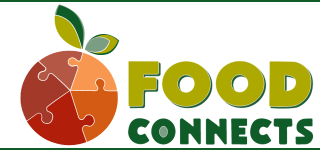A seed was planted in the fall of 2024 by Mandy Walsh, school librarian and experienced Farm to School (FTS) educator at Westminster Center School. She put forward the idea to strengthen the community of educators in southern Vermont who are working towards Educating for Sustainability and strengthening Farm to School education in their schools.
Food Connects staff, with support from a grant from the Vermont Agency of Education and the Vermont Farm to School and Early Childhood Network, were able to nurture that seed through a 6-month Community of Practice group for educators, and the harvest has arrived!
Here’s a summary of the growth of this inspiring peer-to-peer professional development program.
After several planning sessions between Mandy, Jody Hauser (school librarian and FTS champion at Central Elementary School in Bellows Falls), Kris Nelson (FTS Program Director at Food Connects) and Sheila Humphreys (FTS Lead Coach at Food Connects), we launched the 6 month discussion series in January 2025.
Over the past 6 months, 12 local educators from 3 different school districts have participated in these monthly discussions. Topics, chosen by the educators themselves, and included:
January: Connecting Expeditionary Learning (EL)with Sustainability and FTS
February: Composting and Vermiculture
March: Family and Community Engagement in FTS Programs
April: Integrating Vermont’s Harvest of the Month Program with EL and FTS
May: Garden and Greenhouse Tour, Westminster Center School
June: Garden and Outdoor Classroom Tour, Academy School
The Community of Practice Model allowed the group to engage in the process of collective learning about a topic that inspires all of them. By sharing their knowledge and experiences with each other, asking questions, and inviting guest presenters to speak to the group on specific topics, all participants benefited from the opportunity to improve their teaching practices. They also were able to strengthen relationships with like-minded educators in neighboring districts and create a shared repertoire of resources.
In addition to curriculum connections, this group of educators also discussed ways to increase family engagement in their programs, from harvest dinners to community work days to school based farmer’s markets. They discussed problems with school composting systems, and brainstormed solutions to better educate their school communities about composting, including working in partnership with Windham Solid Waste Management District’s Education Coordinator, Alex Lacy and doing hands on composting initiatives like vermiculture in classrooms and onsite composting for garden waste.
They explored ways to connect the vibrant Vermont Harvest of the Month Program, which is a great entry point for new schools that are just beginning their Farm to School programs as well as a lasting resource for thriving FTS programs, into EL curriculum and explored best practices for taste tests in schools.
The last 2 sessions were held in-person, on-site, in school gardens at Westminster Center School and Academy School.
We look forward to watching how this inspiring community of educators continues to grow and blossom over time!































































